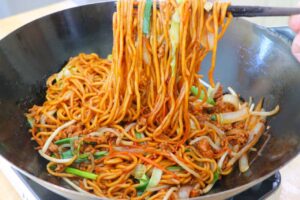
Cantonese Roasted Duck Recipe
Making authentic Cantonese Roast Duck at home may seem intimidating, but when you break it down into manageable steps, it becomes an incredibly rewarding experience. With just a few specialized tools and a bit of advance planning, you can achieve crisp, lacquered skin and juicy, flavorful meat—just like the kind served at traditional Cantonese barbecue shops. The key lies in air-drying, precise blanching, and roasting in two stages. Serve it with plum sauce for a stunning, restaurant-quality centerpiece.
Cantonese Roast Duck Recipe
Serves: 4
Prep Time: 40 minutes
Rest Time: At least 24 hours
Cook Time: 1 hour 10 minutes
Special equipment:
Tweezers
8-inch stainless steel turkey lacer or bamboo skewer
Air compressor
Stainless steel S-shaped hook or butcher’s twine
Wire cooling rack
Roasting pan and rack
For the duck:
1 (3 1/2-pound) whole duck, neck attached
16 cups water, divided
2 cups ice (for ice bath)
Plum sauce, for serving
For the dry rub:
1 tablespoon salt
1 tablespoon white pepper
1 tablespoon five-spice powder
1 teaspoon sugar
For the marinade:
1 tablespoon soy sauce
1 tablespoon oyster sauce
1 tablespoon hoisin sauce
2 pieces fermented red bean curd
1 teaspoon five-spice powder
1 teaspoon sugar
3 scallions, cut into 3-inch pieces
3 slices ginger
3 cloves garlic, lightly smashed
For the blanching liquid:
8 cups water
1/2 cup rose cooking wine (mei kuei lu chiew), or rice wine
1/2 cup diluted red vinegar (da hong zhe cu), or rice vinegar
1/2 cup maltose, or honey
Cantonese Roast Duck Instructions
1. Prep the duck:
- Wash the duck with warm water and pat dry thoroughly.
- Trim excess fat from the cavity.
- Use tweezers to pluck out any pinfeathers or use a cooking torch to singe them off.
- If the feet are attached, remove them with a knife.
2. Apply the dry rub:
- In a small bowl, mix the salt, white pepper, five-spice powder, and sugar.
- Rub the mixture all over the duck, including the cavity.
- Refrigerate for 2 hours to allow the seasoning to penetrate.
3. Make the marinade:
- In another bowl, combine the soy sauce, oyster sauce, hoisin sauce, fermented red bean curd, five-spice powder, and sugar.
- Mix until the bean curd dissolves. Add the scallions, ginger, and garlic.
4. Marinate and truss:
- Remove the duck from the fridge.
- Pour the marinade into the cavity and rub it over the exterior.
- Use a turkey lacer or bamboo skewer to seal the cavity shut.
5. Inflate the duck:
- Insert an air compressor nozzle under the skin at the neck area.
- Cover gaps with paper towels and inflate the duck until the skin separates from the meat.
- Flip and repeat on the other side.
- If no compressor is available, gently work your hand or a wooden spoon under the skin to loosen it manually.
6. Blanch and ice:
- Prepare an ice bath in a large bowl. Boil 8 cups of water in a separate pot.
- Turn off the heat and ladle the hot water over the duck for 2 minutes to firm the skin.
- Immediately dunk the duck in the ice bath, then pat it dry.
7. Blanch again with flavor:
- Clean the pot and bring another 8 cups of water to a boil.
- Stir in rose wine, red vinegar, and maltose. Turn off the heat.
- Ladle this mixture over the duck for 2 minutes to enhance color and aroma.
8. Air-dry the duck:
- Remove the hook or twine and trim off the neck and head.
- Set the duck breast side up on a wire rack over a tray and place it in the fridge, uncovered, for 24–48 hours to air-dry. (A fan or blow dryer can speed this up.)
9. Roast the duck:
- Line a roasting pan with foil and set a rack on top.
- Place the duck breast side up on the rack and wrap the wings and legs in foil.
- Let rest at room temperature for 20 minutes.
- Preheat oven to 425°F (220°C).
10. Two-stage roasting:
- Roast the duck for 10 minutes.
- Reduce heat to 350°F (175°C) and roast for another 20 minutes.
- Flip the duck breast side down and roast for 20 minutes.
- Then remove foil from wings and legs and roast 20 more minutes. (Add 15 minutes per extra pound if using a larger duck.)
11. Rest and serve:
- Let the duck rest for 10 minutes.
- Remove and discard the aromatics from the cavity.
- Chop the duck into serving pieces and serve with plum sauce.
Tips & notes
- For best results, use a leaner duck like Long Island (Pekin), which crisps up more easily.
- If you don’t have an air compressor, loosening the skin manually still helps improve crispiness.
- Hanging the duck during the drying process allows for optimal airflow—if possible, use a hook and hang in a cool, ventilated area.
- Roasting times may vary depending on your oven and the size of the duck—monitor closely during the final stage.
- Save leftover bones to make a rich duck broth.
Related Recipes
You may also like

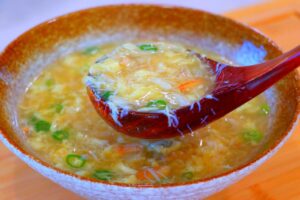
5-Min Crab Egg Drop Soup Recipe
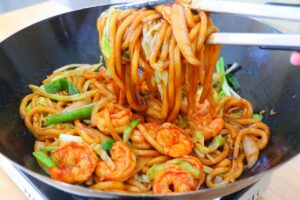
15-Min Shrimp Udon Stir-Fry Recipe
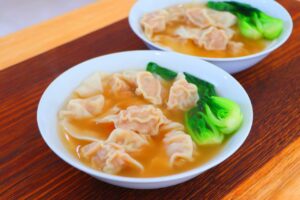
25-Min Chicken Wonton Soup Recipe
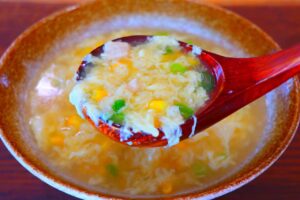
10-Min Chicken and Corn Egg Drop Soup Recipe

10-Min Thai Crab Fried Rice Recipe
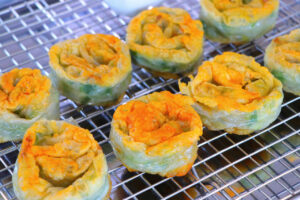
20-Min Rice Paper Scallion Pancakes
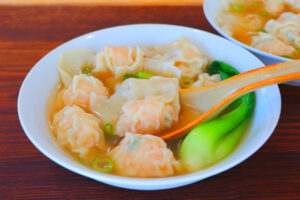
30-Min Shrimp Wonton Soup Recipe
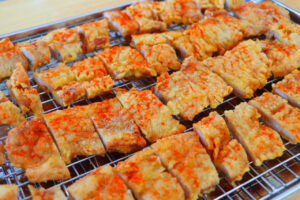
20-Min Crispy Fried Pork Belly Recipe
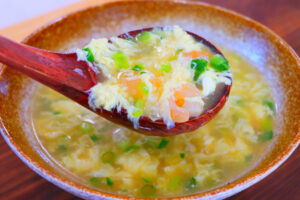
10-Min Seafood Egg Drop Soup Recipe

30-Min General Tso’s Chicken Recipe
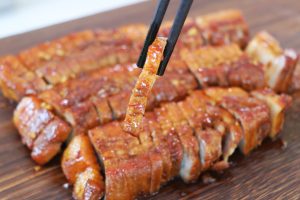
30-Min Honey Garlic Pork Belly Recipe
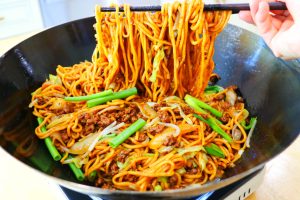
15-Min Beef Lo Mein Recipe
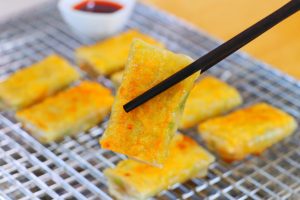
30-Min Crispy Shrimp Dumplings with Rice Paper
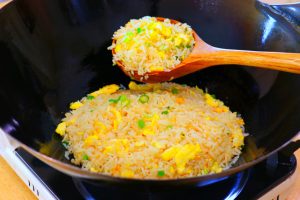
3-Min Egg Fried Rice Recipe

25-Min Chicken Lo Mein Recipe

15-Min Thai Shrimp Fried Rice Recipe
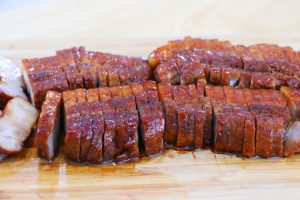
30-Min Braised Pork Belly in Soy Sauce Recipe
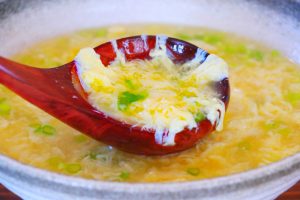
5-Min Egg Drop Soup Recipe: Better Than Takeout
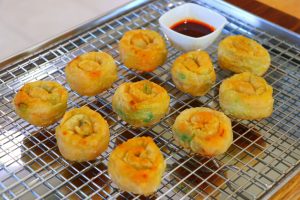
25-Min Crispy Rice Paper Shrimp Dumplings

25-Min Beef and Onion Lo Mein Recipe

15-Min Stir-Fried Tomato & Egg Recipe
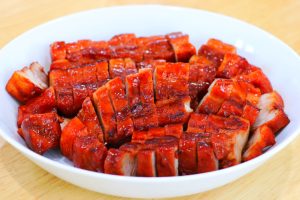
30-Min Char Siu Pork Belly Recipe—No-Oven Needed!
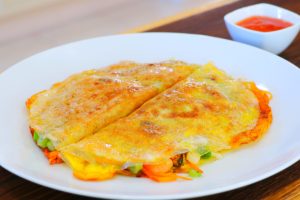
10-Min Crispy Rice Paper Seafood Omelet Recipe
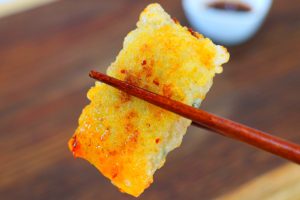
Crispy Rice Paper Chicken Dumplings

10-Min Crispy Salt and Pepper Shrimp Recipe

Crispy Chicken Spring Roll Pockets
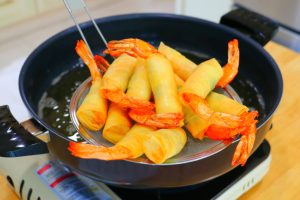
25-Min Crispy Shrimp Rolls
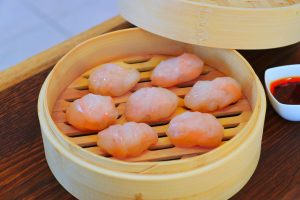
15-Min Rice Paper Shrimp Dumplings
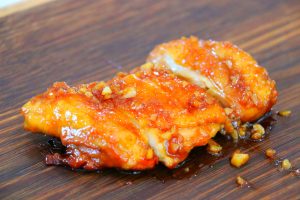


9 thoughts on “Cantonese Roasted Duck Recipe”
Amazing website and Delicious recipes
Your recipes are always reliable and good. Great! Thank you for sharing.
Thank you so much for your kind comment! 🙂
Amazing recipe
Is fermented red bean curd spicy? thats the only one I can find.
Hi Elena,
Thank you for your question. There are many types of fermented red bean curd. The one I’m using isn’t spicy. You can also use the spicy type if it’s red in color.
Best,
CiCi
Hi,
Do you have any recommendations for side dishes that would go well with this bird?
Thank You!
Franzi
Hi Franzi,
Thank you for the questions! I haven’t made a lot of side dishes in the past. I have a playlist here, which has 2 side dishes in there that could go well with the Roasted Duck. Enjoy! https://www.youtube.com/watch?v=LfJkcuKFjnQ&list=PLn4pJAij_vmi8HJBKIkjxpu3yiIZ1Gf2I
You can use black bean curd as a replacement. That’s what I’ve done this year.